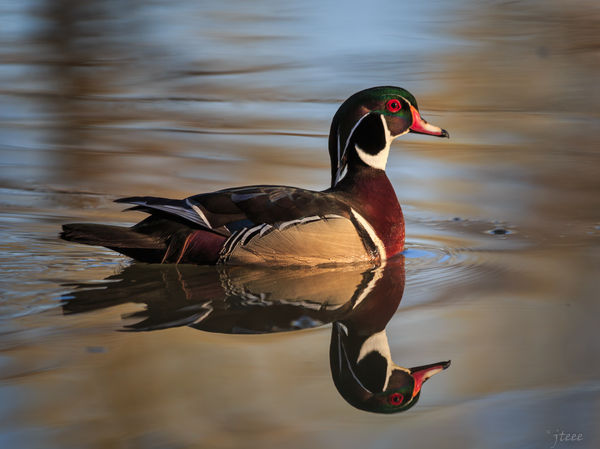How do they get those bird pictures to look so good?
Jun 10, 2015 12:43:16 #
You have sparked a really informative thread. I have been practicing with birds for about two years, and still have a long way to go. Using the Canon 6D and Sigma 150-500 has produced a few good photos, but I agree that technical knowledge, and the best gear you can afford will improve your success ratio. All of you that go handheld are obviously much more skilled than I, as my success ratio with my setup is pretty low handheld. Best results have come from tripod, and remote shutter release. Many bird photographers also recommend Aperture priority which allows for quicker exposure selection, which is what I use exclusively. It sure is fun, no matter how you go about it. Now if I could come up with the $7500 for that 500 f4 lens just think how good I could become.
Jun 10, 2015 12:45:45 #
jteee wrote:
You have sparked a really informative thread. I h... (show quote)
Love the mood in this shot - and I paid less than that for my 600mm F4 used.
Jun 10, 2015 13:00:49 #
jteee wrote:
You have sparked a really informative thread. I h... (show quote)
That's a beautiful shot of a beautiful bird.
I need to ask a question:
How does aperture priority work with regard to bird photography? I understand what the modes do, therefore selecting your aperture and allowing the camera to choose your shutter speed...and iso if you've selected auto iso.
So.... In an activity, such as bird photography, where a fast shutter speed is needed (if not mandatory), how does guaranteeing an aperture, not a shutter speed, benefit?
Jun 10, 2015 13:05:47 #
Greenguy33 wrote:
As a member of a few bird and wildlife pages on Facebook, I am amazed by the sharpness and quality of some of the images.
I have been trying to take photos like that, but I am not there yet.
Can anyone give me any tips? I think that sometimes I over process images in order to compensate for the poor out-of-the-camera image.
Are there any good websites or tutorials? Can you recommend some advanced books?
I have been trying to take photos like that, but I am not there yet.
Can anyone give me any tips? I think that sometimes I over process images in order to compensate for the poor out-of-the-camera image.
Are there any good websites or tutorials? Can you recommend some advanced books?
With your Nikon D800 and Tamron 150-600mm Lens you have all the quality equipment you need.
I can not say use XYZ settings because each shot is different.
I do use Manual Settings, with the lowest ISO I can get away with.
I can tell you that I do focus on the eyes and I am pretty consistent with that.
For example, your Dragonfly shot, the focus is on the wings and not the Eye.
I shoot lots of shots and hope for 1 out of 10 to be a keeper worth processing.
Craig
Jun 10, 2015 13:07:11 #
Capn_Dave wrote:
A couple of tips I have picked up over the years. ... (show quote)
@Capn_Dave: I've been reading this forum for several years, usually staying in the background, but sometimes putting in the odd photo. I just wanted to let you know I appreciate your answer. It's nice when someone takes the time to provide a real answer rather than just saying, "go read his link". THANK YOU...D'
Jun 10, 2015 13:09:54 #
ptcanon3ti wrote:
That's a beautiful shot of a beautiful bird.
I need to ask a question:
How does aperture priority work with regard to bird photography? I understand what the modes do, therefore selecting your aperture and allowing the camera to choose your shutter speed...and iso if you've selected auto iso.
So.... In an activity, such as bird photography, where a fast shutter speed is needed (if not mandatory), how does guaranteeing an aperture, not a shutter speed, benefit?
I need to ask a question:
How does aperture priority work with regard to bird photography? I understand what the modes do, therefore selecting your aperture and allowing the camera to choose your shutter speed...and iso if you've selected auto iso.
So.... In an activity, such as bird photography, where a fast shutter speed is needed (if not mandatory), how does guaranteeing an aperture, not a shutter speed, benefit?
This is a subject of much controversy ......
Jun 10, 2015 13:11:57 #
ptcanon3ti wrote:
That's a beautiful shot of a beautiful bird.
I need to ask a question:
How does aperture priority work with regard to bird photography? I understand what the modes do, therefore selecting your aperture and allowing the camera to choose your shutter speed...and iso if you've selected auto iso.
So.... In an activity, such as bird photography, where a fast shutter speed is needed (if not mandatory), how does guaranteeing an aperture, not a shutter speed, benefit?
I need to ask a question:
How does aperture priority work with regard to bird photography? I understand what the modes do, therefore selecting your aperture and allowing the camera to choose your shutter speed...and iso if you've selected auto iso.
So.... In an activity, such as bird photography, where a fast shutter speed is needed (if not mandatory), how does guaranteeing an aperture, not a shutter speed, benefit?
Best approach is to avoid the "set it and forget it" mentality. Have you ever watched pros at a sporting event, or at a popular wildlife venue? Their hands are all over the camera, constantly adjusting shutter and ISO manually, as well as making fine focus adjustments. Most of the time they set the aperture and leave it alone, however. But it is quite a dance. Given the narrow margin of error on many types of birds with bright plumage, setting the camera to auto anything almost ensures blown highlights.
Jun 10, 2015 13:14:09 #
Gene51 wrote:
Love the mood in this shot - and I paid less than that for my 600mm F4 used.
Thanks for the compliment. I have my eye on a used 600 as well, hope I can find enough pennies quick enough...
Jun 10, 2015 13:23:29 #
ptcanon3ti wrote:
That's a beautiful shot of a beautiful bird.
I need to ask a question:
How does aperture priority work with regard to bird photography? I understand what the modes do, therefore selecting your aperture and allowing the camera to choose your shutter speed...and iso if you've selected auto iso.
So.... In an activity, such as bird photography, where a fast shutter speed is needed (if not mandatory), how does guaranteeing an aperture, not a shutter speed, benefit?
I need to ask a question:
How does aperture priority work with regard to bird photography? I understand what the modes do, therefore selecting your aperture and allowing the camera to choose your shutter speed...and iso if you've selected auto iso.
So.... In an activity, such as bird photography, where a fast shutter speed is needed (if not mandatory), how does guaranteeing an aperture, not a shutter speed, benefit?
I should clarify, as your question is valid. When set up in a blind, or other stationary position, you can evaluate the light (assuming it is relatively constant), and select the most suitable aperture which will give the best shutter speed and DOF. On a tripod, then it is just a matter of focus and shoot, and your shutter speed will be (for the most part) where you want it to be. This is how I predominantly operate. However, as you stated, for BIF, many do use Shutter Priority with auto ISO (as I have as well). I just don't have the experience with BIF yet. Sorry, I should have stated that more clearly in my post.
Jun 10, 2015 13:28:53 #
Karl Shuffler
Loc: Weinert, Texas
Sharpness depends on lighting as well. Shadow lighting will dampen sharpness.
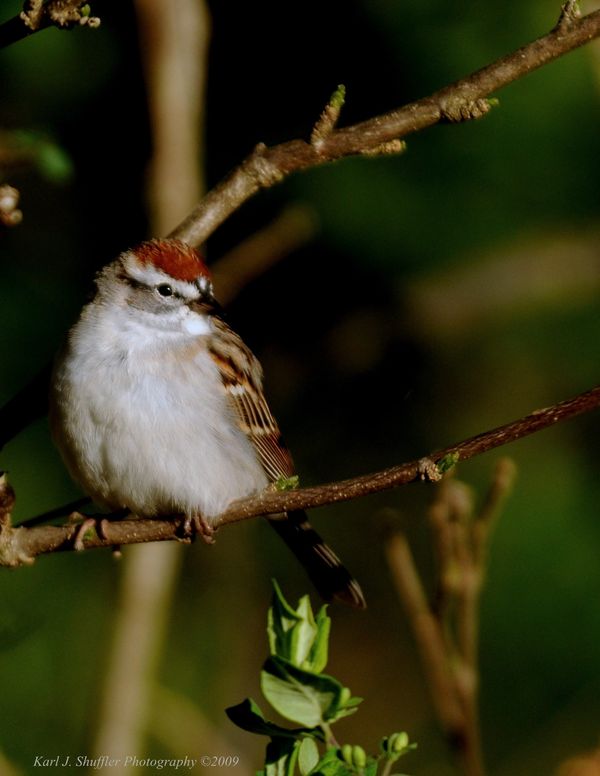
Jun 10, 2015 13:29:41 #
Greenguy33 wrote:
As a member of a few bird and wildlife pages on Facebook, I am amazed by the sharpness and quality of some of the images.
I have been trying to take photos like that, but I am not there yet.
Can anyone give me any tips? I think that sometimes I over process images in order to compensate for the poor out-of-the-camera image.
Are there any good websites or tutorials? Can you recommend some advanced books?
I have been trying to take photos like that, but I am not there yet.
Can anyone give me any tips? I think that sometimes I over process images in order to compensate for the poor out-of-the-camera image.
Are there any good websites or tutorials? Can you recommend some advanced books?
Green Guy 33, I do not photograph birds that often, but I like to make a capture that might have something to say, you know, story telling.
There are things to be aware of in the making of a photograph. Knowing how to use your equipment and placing the proper settings is a good place to start.
There are three things in the making of a photograph. When your eye is in the view finder of your camera, that's the first. The second is, using your brain to concentrate on your subject. Third, is your shutter finger. Your brain is telling you something is happening, snape that shutter. If you wait just one second, you will miss your shot and it will be gone forever!
It's not as easy as one thinks. You have to have high concentration, only those three things as mentioned above work perfectly well together. Just practice and practice, and know what it takes to freeze that capture, and you'll make that decisive moment.
Check out these three inclosed moments. They are photo labeled with all settings used. These bird photos are tougher in the making than a bird sitting on a branch. AP
Panasonic GX-7 ISO 4000 w/Olumpus 12-40mm at 40mm = 80mm on 4/3rds format at f2.8 & 1/1,300sec - overcast day after 6:00pm
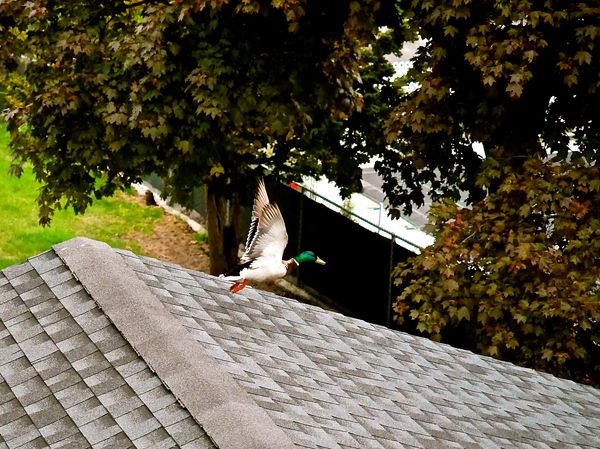
(Download)
Panasonic GX-7 ISO 4000 w/Olumpus 12-40mm at 40mm=80mm on 4/3rds formet at f2.8 & 1/1,300sec - overcast day after 6:00pm
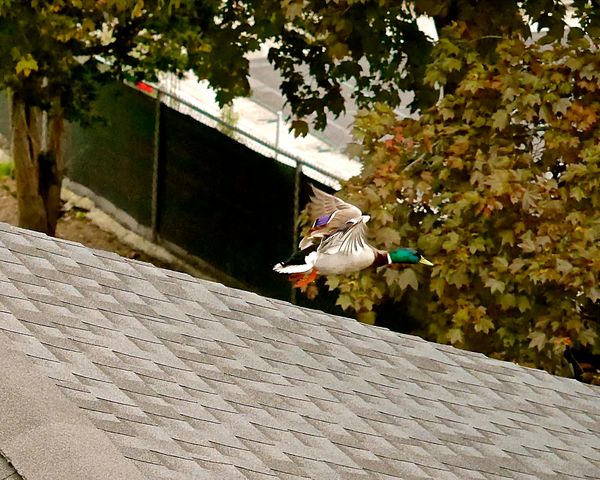
(Download)
Olympus E5 wOlympus/70-300mm ISO 400 - at 300mm=600mm on 4/3rds format at f5.6 1/2000sec
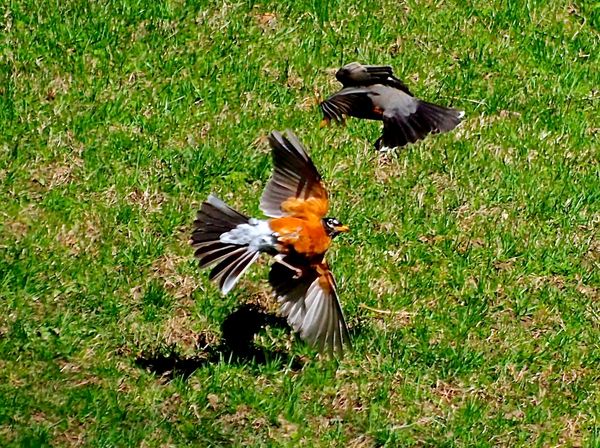
(Download)
Jun 10, 2015 14:12:04 #
DerrickCurtis wrote:
@Capn_Dave: I've been reading this forum for several years, usually staying in the background, but sometimes putting in the odd photo. I just wanted to let you know I appreciate your answer. It's nice when someone takes the time to provide a real answer rather than just saying, "go read his link". THANK YOU...D'
Thank you Derrick, One of my things is I teach people photography. I try to be as informative and precise as possible when given the time.
Thanks again
Dave
Jun 10, 2015 14:57:18 #
Along with the grest equipment ideas. Always focus on the eye's. 👍
Jun 10, 2015 15:22:11 #
Gene51 wrote:
Not at all, but imagine how much better these shots would have been if you and a better camera and lens. You obviously have the skill set to get the shot.
Everyone should aspire to improve - and if in the range of aspiration there is a new piece of gear or two that has to be purchased, that's ok. based on these images it does seem as if your gear is holding you back.
Everyone should aspire to improve - and if in the range of aspiration there is a new piece of gear or two that has to be purchased, that's ok. based on these images it does seem as if your gear is holding you back.
Guess I'll have to take up Scrabble!
Jun 10, 2015 15:23:22 #
ldef
Loc: Chicago
ptcanon3ti wrote:
That's a beautiful shot of a beautiful bird.
I need to ask a question:
How does aperture priority work with regard to bird photography? I understand what the modes do, therefore selecting your aperture and allowing the camera to choose your shutter speed...and iso if you've selected auto iso.
So.... In an activity, such as bird photography, where a fast shutter speed is needed (if not mandatory), how does guaranteeing an aperture, not a shutter speed, benefit?
I need to ask a question:
How does aperture priority work with regard to bird photography? I understand what the modes do, therefore selecting your aperture and allowing the camera to choose your shutter speed...and iso if you've selected auto iso.
So.... In an activity, such as bird photography, where a fast shutter speed is needed (if not mandatory), how does guaranteeing an aperture, not a shutter speed, benefit?
I usually shoot A-priority, but there are certain situations when I feel I need to control shutter speed to get sharpness, even if there is no movement. Tripods are hugely critical for really long shots but not always available. I find myself hand holding. I take what I can get and try to work out in PP.
If you want to reply, then register here. Registration is free and your account is created instantly, so you can post right away.

